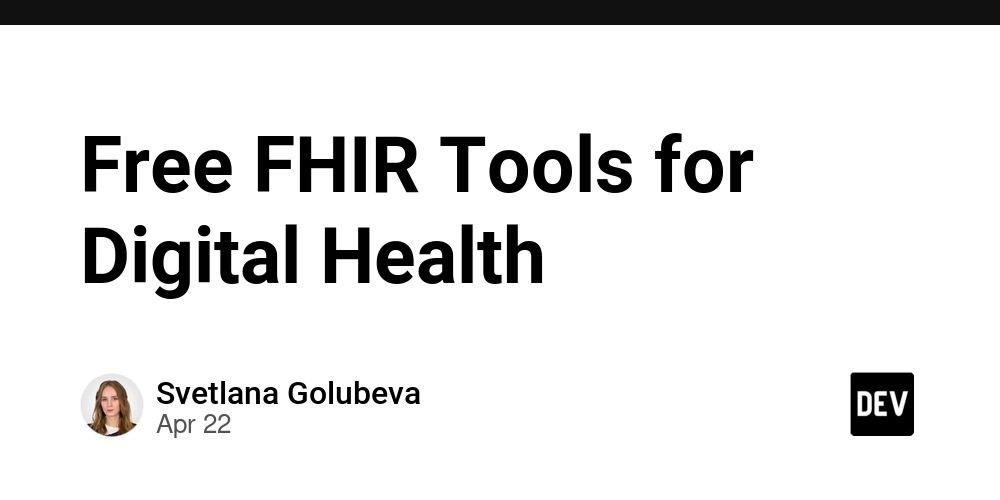Mastering Data Collection: Techniques Every Data Scientist Must Learn
In this age of data-driven world, the beginnings of successful analytics projects hinge on the managing and collection of accurate or efficient data. In conclusion, the entire analysis would rely on the kind of data they are able to collect, and poor data inputs would present to the data scientist either misleading insights or outright wrong decisions. As data science becomes more prevalent in all fields, it is most essential for a person who wants to build a solid base in data science to learn those techniques. Surveys and Questionnaires Surveys remain to be the most widely and still direct ways of primary data collection. Carefully defined, surveys can result in intelligent insights into the behavior of the customers, their likes and dislikes, as well as the various market trends. Modern tools such as Google Forms and SurveyMonkey facilitate large-scale deployment of surveys. However, these carry the biggest challenges of unbiased question framing and high response rate, both of which guarantee meaningful results. Web Scraping Web scraping involves extracting large volumes of data from websites. This is a relative newcomer to the very popular toolbox with the online content explosion expanding every second. Tools like BeautifulSoup, Scrapy, and Selenium now allow data scientists to automate the extraction of information sourced from diverse e-commerce sites, social media platforms, and online news outlets. Ethical implications, including adherence to the website's terms of service and privacy laws regarding data collection, have taken on even more importance with these evolving practices of scraping websites. Application Programming Interfaces (APIs) Many businesses, from Twitter to Spotify, provide application programming interfaces (APIs) that allow for the near-instant gathering of data in structured formats. Collection of data using APIs has the assurance of clean, up-to-date data that originates directly from the provider. APIs are very beneficial for those projects that require real-time data monitoring, such as financial markets analysis or trends followed. One of its advantages is that reliable and standardized the data will be so. 4.Sensor Data Around IoT devices, sensor data became a valuable type of resources. Industries such as healthcare, manufacturing, and smart cities are using sensors to read real-time operational data. Sensory data require specialized time-series analysis and edge computing skills becoming necessary skills for the present-day data scientist. Social Media Monitoring Social media platforms process massive amounts of data daily. Keeping an eye on this data enables brands to analyze sentiments, track trends, and understand consumer engagement. Sentiment analysis, hashtag tracking, and influencer mapping enable organizations to garner public opinion with real-time relevance. Given the recent concerns over AI and misinformation, data scientists are concerned with verifying the authenticity of social media data before being put to any analytical use. Transactional Data This includes knowledge about markets and consumer behavior that is richly collected through all stages of e-commerce, banking, and POS systems for transactional data. Most of this data is kept in relational database form, thus knowledge of SQL is still a basic requirement to extract it efficiently. With an increase in the use of digital payment systems, transactional data continue to grow, therefore enhancing opportunities for predictive analytics and customer segmentation. Experimental Data Experimental data collection is when data scientists design a controlled experiment to observe a particular outcome. An A/B test illustrates this procedure common in product development and digital marketing. These experimental data are considered very valuable in being able to prove causation rather than simple correlation, therefore providing deeper decision support insight. Crowdsourcing Crowdsourcing platforms like Amazon Mechanical Turk allow companies to assemble labeled datasets at scale, typically for machine-learning training purposes. It's fast and cheap, but close attention must be paid to ensure quality control to determine whether the data collected can be trusted and relied on. Emerging Issues in Data Collection These advancements have brought in changes in the process of data collection. Synthetic data-generation, for example, computer-generated datasets that mimic their real-world counterparts, therefore, providing new solutions when privacy or limited access is an issue. Synthetic data is expected to play an important role in industries like healthcare and finance, where protecting sensitive information is paramount. On the other hand, goal-oriented data collection is becoming increasingly difficult due to data privacy issues and new regulations like GDPR and CCPA that now restrict the collection of personal information. The Ethical implication of such an act, therefore, requires data scientists' at

In this age of data-driven world, the beginnings of successful analytics projects hinge on the managing and collection of accurate or efficient data. In conclusion, the entire analysis would rely on the kind of data they are able to collect, and poor data inputs would present to the data scientist either misleading insights or outright wrong decisions. As data science becomes more prevalent in all fields, it is most essential for a person who wants to build a solid base in data science to learn those techniques.
Surveys and Questionnaires
Surveys remain to be the most widely and still direct ways of primary data collection. Carefully defined, surveys can result in intelligent insights into the behavior of the customers, their likes and dislikes, as well as the various market trends. Modern tools such as Google Forms and SurveyMonkey facilitate large-scale deployment of surveys. However, these carry the biggest challenges of unbiased question framing and high response rate, both of which guarantee meaningful results.Web Scraping
Web scraping involves extracting large volumes of data from websites. This is a relative newcomer to the very popular toolbox with the online content explosion expanding every second. Tools like BeautifulSoup, Scrapy, and Selenium now allow data scientists to automate the extraction of information sourced from diverse e-commerce sites, social media platforms, and online news outlets. Ethical implications, including adherence to the website's terms of service and privacy laws regarding data collection, have taken on even more importance with these evolving practices of scraping websites.Application Programming Interfaces (APIs)
Many businesses, from Twitter to Spotify, provide application programming interfaces (APIs) that allow for the near-instant gathering of data in structured formats. Collection of data using APIs has the assurance of clean, up-to-date data that originates directly from the provider. APIs are very beneficial for those projects that require real-time data monitoring, such as financial markets analysis or trends followed. One of its advantages is that reliable and standardized the data will be so.
4.Sensor Data
Around IoT devices, sensor data became a valuable type of resources. Industries such as healthcare, manufacturing, and smart cities are using sensors to read real-time operational data. Sensory data require specialized time-series analysis and edge computing skills becoming necessary skills for the present-day data scientist.
Social Media Monitoring
Social media platforms process massive amounts of data daily. Keeping an eye on this data enables brands to analyze sentiments, track trends, and understand consumer engagement. Sentiment analysis, hashtag tracking, and influencer mapping enable organizations to garner public opinion with real-time relevance. Given the recent concerns over AI and misinformation, data scientists are concerned with verifying the authenticity of social media data before being put to any analytical use.Transactional Data
This includes knowledge about markets and consumer behavior that is richly collected through all stages of e-commerce, banking, and POS systems for transactional data. Most of this data is kept in relational database form, thus knowledge of SQL is still a basic requirement to extract it efficiently. With an increase in the use of digital payment systems, transactional data continue to grow, therefore enhancing opportunities for predictive analytics and customer segmentation.Experimental Data
Experimental data collection is when data scientists design a controlled experiment to observe a particular outcome. An A/B test illustrates this procedure common in product development and digital marketing. These experimental data are considered very valuable in being able to prove causation rather than simple correlation, therefore providing deeper decision support insight.Crowdsourcing
Crowdsourcing platforms like Amazon Mechanical Turk allow companies to assemble labeled datasets at scale, typically for machine-learning training purposes. It's fast and cheap, but close attention must be paid to ensure quality control to determine whether the data collected can be trusted and relied on.
Emerging Issues in Data Collection
These advancements have brought in changes in the process of data collection. Synthetic data-generation, for example, computer-generated datasets that mimic their real-world counterparts, therefore, providing new solutions when privacy or limited access is an issue. Synthetic data is expected to play an important role in industries like healthcare and finance, where protecting sensitive information is paramount.
On the other hand, goal-oriented data collection is becoming increasingly difficult due to data privacy issues and new regulations like GDPR and CCPA that now restrict the collection of personal information. The Ethical implication of such an act, therefore, requires data scientists' attention in balancing the need for more comprehensive datasets with those of ethical considerations and legal compliance. Techniques like differential privacy and federated learning for privacy preservation are gaining traction and have the potential to change the game for how data is collected in the future.
Enterprise data generation, outside traditional data centers, will be 60 percent by 2025, which will involve a pressing need for new methods and tool development specific to decentralization.
Conclusion
With the increase in demand for data science skills worldwide, knowledge of proper data collection techniques has become an unwritten law. From scraping from web resources to working with experimental data, a data scientist today must be agile to accommodate changing methods and tools. New technologies will further complicate data collection, and the ethical use of data will become more and more important, so remaining current is crucial to maintaining credibility and offering valuable data insights.
Interestingly, the popularity of data science is spreading like wildfire, especially in places that are investing heavily in tech education and innovation. Online Data science courses in India, offered on online platforms, have become popular yet competitive pathways for aspiring professionals. Still, one should master data collection, regardless of where one graduates from.



















































































































































![[FREE EBOOKS] AI and Business Rule Engines for Excel Power Users, Machine Learning Hero & Four More Best Selling Titles](https://www.javacodegeeks.com/wp-content/uploads/2012/12/jcg-logo.jpg)

































.jpg?width=1920&height=1920&fit=bounds&quality=70&format=jpg&auto=webp#)












































































_Olekcii_Mach_Alamy.jpg?width=1280&auto=webp&quality=80&disable=upscale#)













































































































![Apple Drops New Immersive Adventure Episode for Vision Pro: 'Hill Climb' [Video]](https://www.iclarified.com/images/news/97133/97133/97133-640.jpg)

![Most iPhones Sold in the U.S. Will Be Made in India by 2026 [Report]](https://www.iclarified.com/images/news/97130/97130/97130-640.jpg)
![Apple to Shift Robotics Unit From AI Division to Hardware Engineering [Report]](https://www.iclarified.com/images/news/97128/97128/97128-640.jpg)












































































































